Lycia Ruins in Turkey - The Breath Of Deep Antiquity
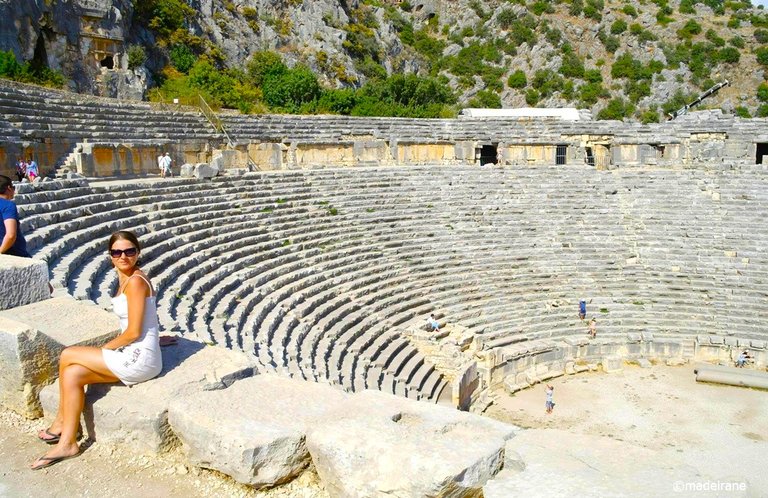
The triple excursion Demre-Myra-Kekova is famous throughout the southern coast of Turkey. To be completely honest, the imagination was most captivated by Kekova, of course: after all, a sunken city, the Turkish Atlantis, and a sea voyage, and all that. But Kekova turned out to be much more modest than I imagined. The second stop - Myra - turned out to be a real bomb.
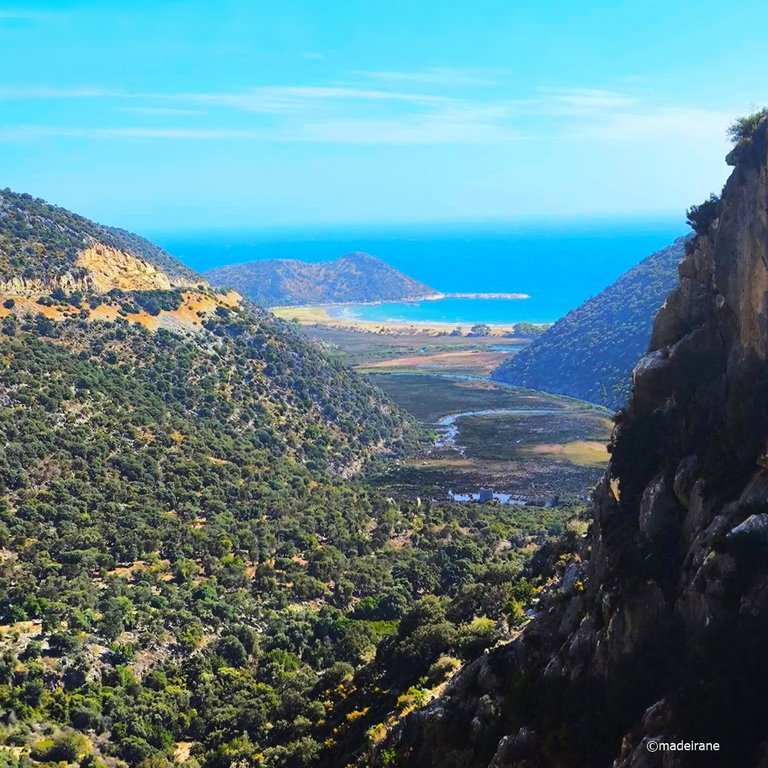
It should be immediately clarified that Lycia is an ancient state with the capital Myra (modern Demre), and not a city, but the place where tourists are taken is often called Lycia, and it is quite small. It is difficult to even call it a city, at least what remains of the former, probably a much larger settlement. In short, these are the ruins of an amphitheater with an adjacent system of rock tombs. That's basically all that remains of the ancient city. Not much, of course, but good. At least it has been preserved with sufficient integrity so that it would be possible, without straining the imagination, to understand what this fragment of the famous settlement was.
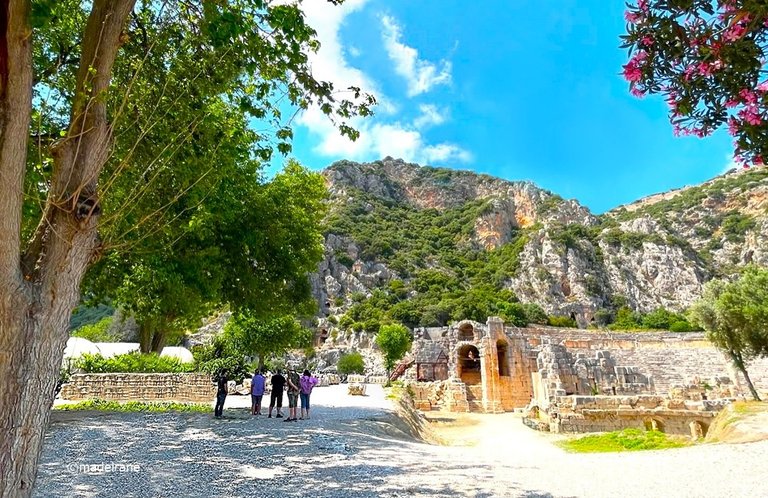
Entrance tickets, if you arrived on your own, can be bought right here, but we were simply given them on the tourist bus, so I don't even know exactly how much they cost. Having received them, we immediately, without wasting a second, hurried to the territory of the so-called city. Not to post a very long blog, today I will describe only some main information about Lycia's ancient city and amphitheater. The tombs I will leave for another blog.
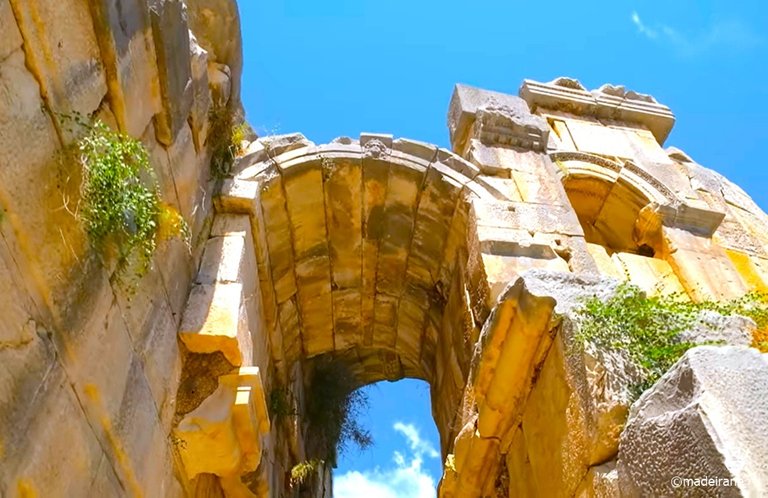
As in the ruins of Kekova, the main building material here is stone. It is two-colored, light with some orange tint at the bottom, and gray at the top. It feels as if it was recently taken out of the ground, or rather sand, and the upper part had been sticking out on the surface for a long time and had turned very black over time, while the lower part remained in a preserved, pristine form.
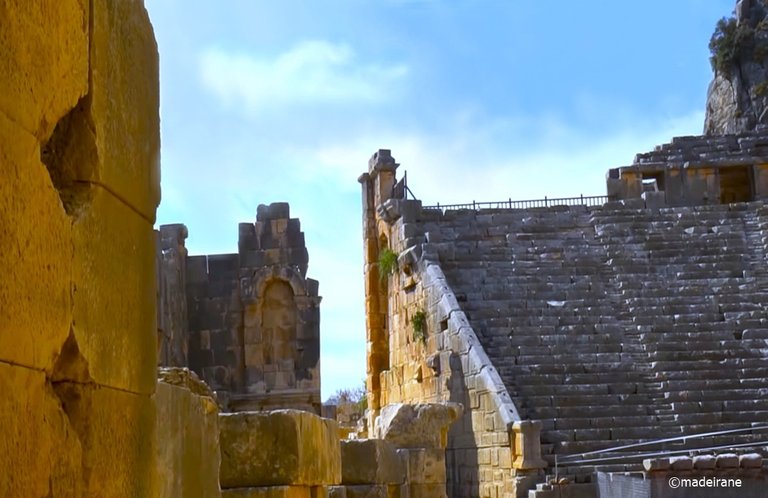
And not only the color, the texture of the stone itself is also far from uniform across the entire surface: in some places it is loose and crumbly, and in others it is quite hard and as if polished. Perhaps this is not far from the truth, considering how many human hands have quenched their thirst to touch it and stroke it with their palms.
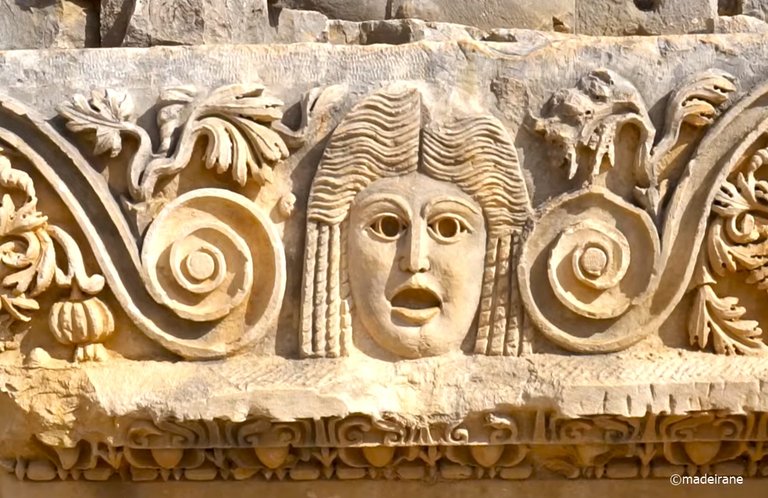

This uneven texture creates the impression that you are touching something so ancient that, in comparison to it, everything you know about life is just dust falling from these gray stones and flying away with the first gust of wind. It is a wonderful feeling. I have never experienced anything like this before.
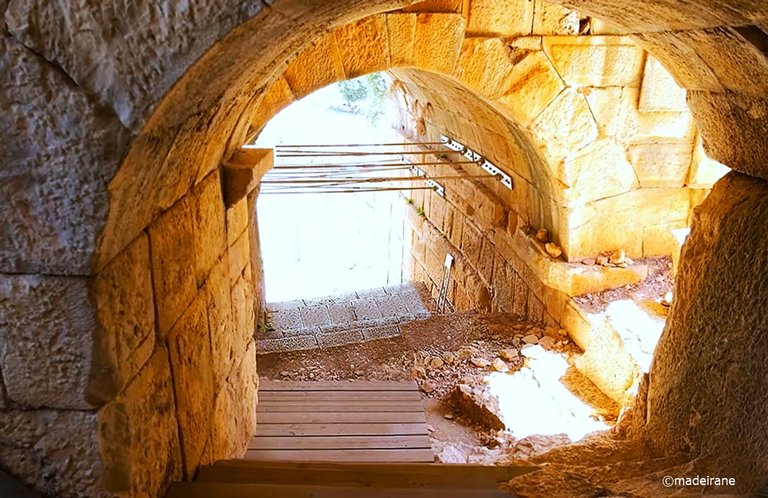
You can find various interesting artifacts throughout the city. From three-dimensional images of faces resembling theatrical masks to columns and intricately processed elements of stone buildings. All this is available not only for photography and video shooting, but also for physical contact. You can touch everything, climb on almost everything, although you should not abuse the latter, because the police officers on duty nearby will definitely pay attention to you.
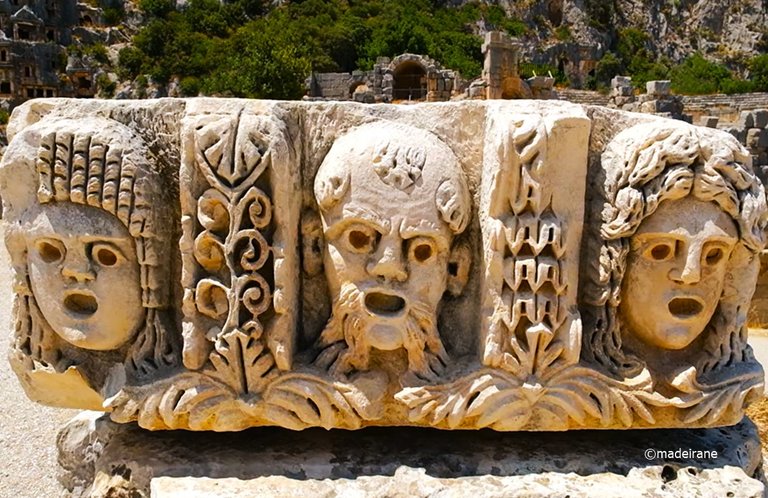
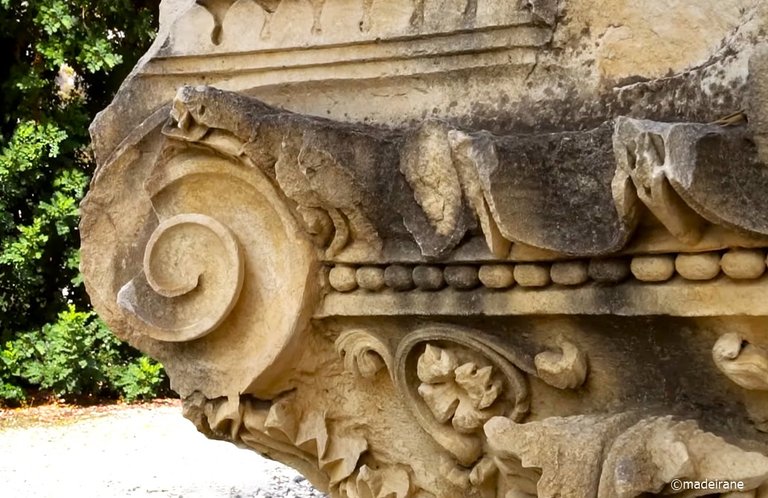
There are metal fences where the physical presence of tourists is most undesirable. It is obvious that they (these fences) are clearly not hundreds of years old. Most likely, this was done not so much for the preservation of the structures, but for the safety of the tourists themselves, because many of the stones do not look very stable. I did not really want to test them for strength and stability. However, perhaps this is only an illusion. Apparently, the weight of these blocks is enormous, and they are not so easy to move even if you want to.
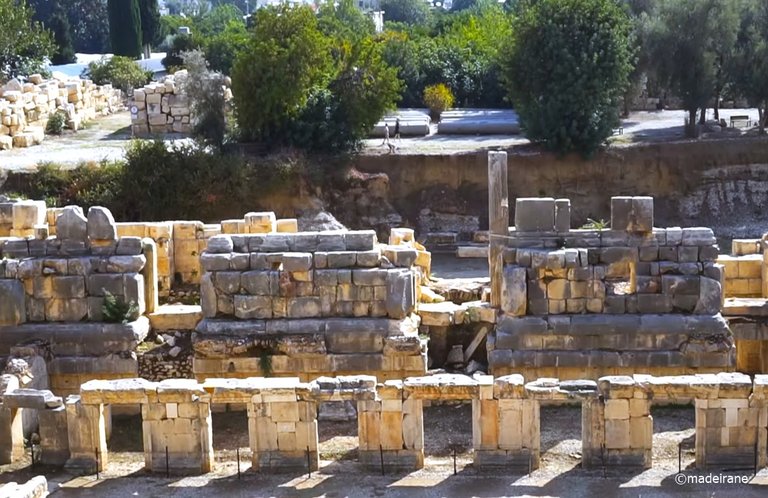
You can enter the city through a huge passage which will take you straight to the amphitheater arena. You can climb up a steep stone staircase into the utility rooms to get to the upper rows from there, or you can go around a little to the left to use a wooden staircase, more gentle.
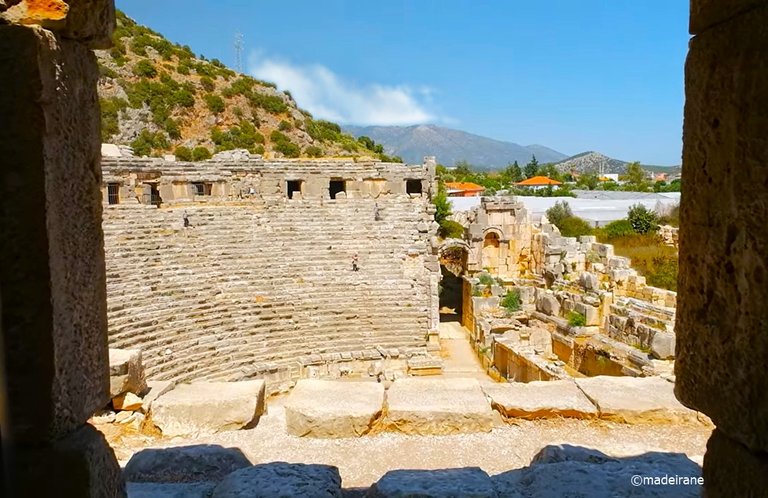
Once in the amphitheater arena, you feel some strange anxiety. Perhaps it's just your imagination, but the feeling is persistent and distinct: you are under the sight of many thousands of eyes, you are in the most visible place. And all because the structure is huge, well-preserved, I would even say, it has not lost its functionality. Indeed, it is easy to accommodate several thousand people here, like in any modern stadium, and each of the spectators will have an excellent opportunity to see everything that is happening in the arena. Unfortunately, I can't say anything about the acoustics here, but theoretically it should be good, because all the building materials are solid.
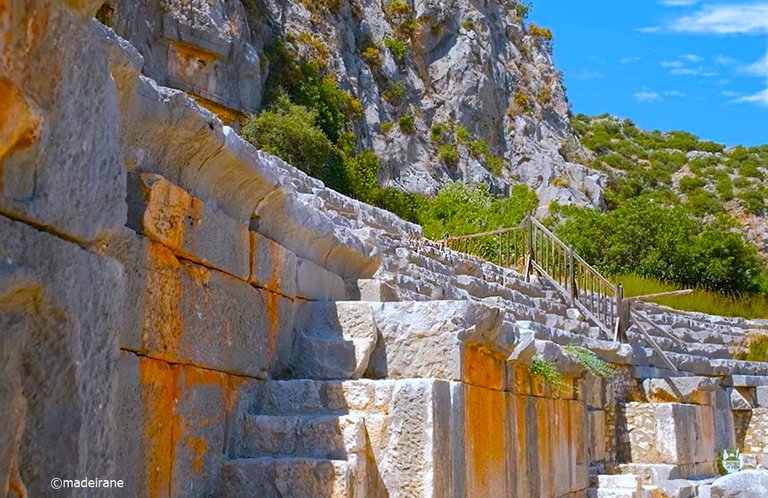
The division into sectors is very noticeable: the stairs, along which spectators could move up and down to take their place in a particular row, are perfectly preserved. Now, tourists from all over the world scurry along them to take pictures or try to feel like a spectator of the ancient world.
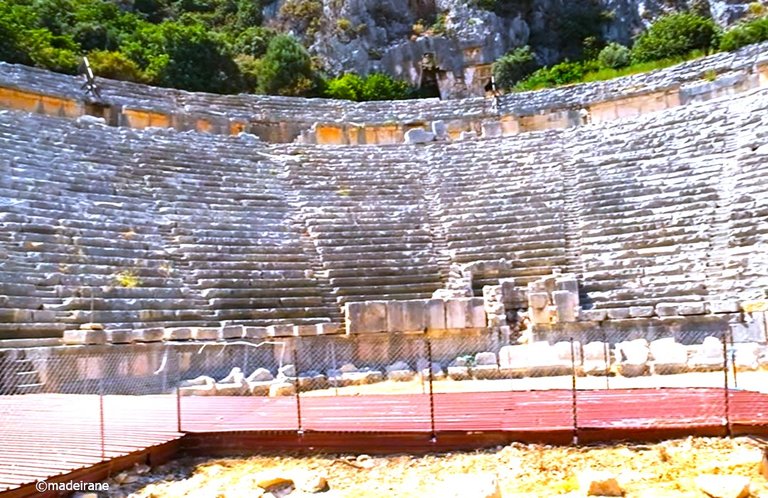
The seats themselves are quite comfortable, although a bit hard. After all, it is a stone. Many tourists are not averse to landing on them to take a photo or just relax and play with their imagination, looking down at the arena or around.
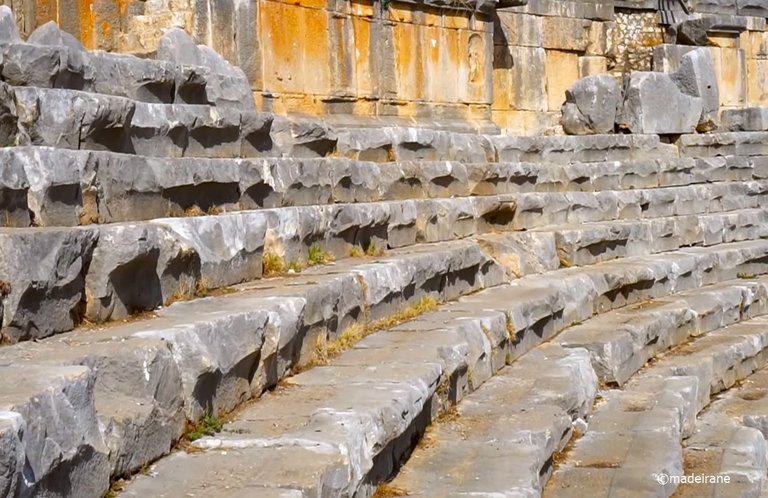
The amphitheater's wings are also quite well-preserved. You can go through arches or ordinary doorways, walk along the corridors and enter the stone dressing rooms. The floor in such rooms is sandy or overgrown with grass, often covered with relatively smooth stone slabs, and in some places wooden - a product of modern times, of course.
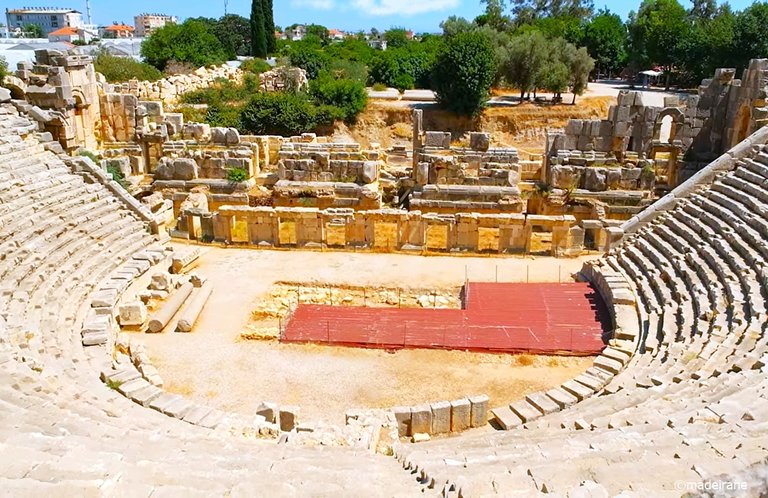
Some utility rooms are pitch dark and if you don't light your way, you can easily hurt yourself, so you have to be very careful when stepping. Especially considering how steep the stairs are here. Either people of the past were all longer-legged than us, or Spartan conditions were in fashion, or the builders didn't care about comfort. After these stairs, our modern ones seem like escalators that lift you up themselves.
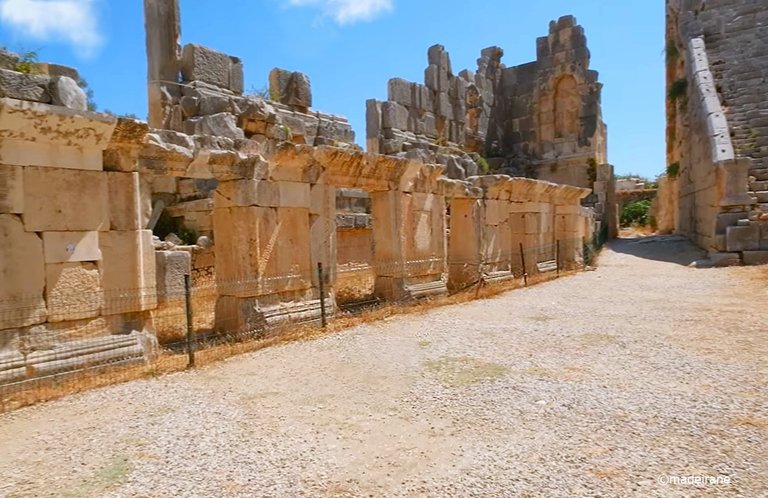
For some time, Lycia managed to maintain independence and live well, with its own traditions and way of life. It had its own language. By the way, some inscriptions on the rocks have not been deciphered to this day. But then, of course, Lycia was conquered. You can read about this in various sources.

What else struck me was the presence of matriarchy in Lycia. The Lycians honored women more than men and the inheritance was left not to sons, but to daughters. The Lycians also traced their lineage through the female line. It is interesting that a child born of a Lycian woman and a slave was considered a full-fledged citizen. But a child born of a Lycian man and a slave was considered a slave.

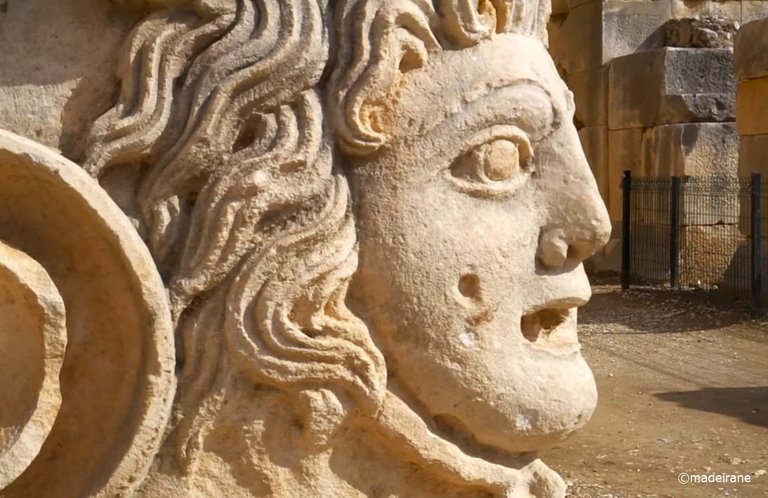
💝💝💝💝💝💝💝💝💝💝
With love, @madeirane
Photos are taken by me.
© 2025
Translated from Lithuanian with DeepL.com (free version).
Triguba ekskursija Demrė-Myra-Kekova garsi visoje pietinėje Turkijos pakrantėje. Tiesą sakant, vaizduotę labiausiai užvaldė Kekova: juk nuskendęs miestas, turkiškoji Atlantida, kelionė jūra ir visa kita. Tačiau Kekova pasirodė kur kas kuklesnė, nei įsivaizdavau. Bet trečioji stotelė - Myra - pasirodė esanti tikra bomba.
Reikėtų iš karto patikslinti, kad Likija - tai senovės valstybė su sostine Myra (dabartinė Demrė), o ne miestas, tačiau vieta, į kurią vežami turistai, dažnai vadinama Likija, ir ji gana nedidelė. Sunku ją net pavadinti miestu, bent jau tai, kas liko iš buvusios, tikriausiai daug didesnės gyvenvietės. Trumpai tariant, tai amfiteatro griuvėsiai su greta esančia uolinių kapaviečių sistema. Tai iš esmės viskas, kas liko iš senovinio miesto. Žinoma, nedaug, bet gerai ir tai. Bent jau išlikę pakankamai vientisai, kad būtų galima, neįtempus vaizduotės, suprasti, kas buvo šis garsiosios gyvenvietės fragmentas.
Įėjimo bilietus, jei atvykote savarankiškai, galima nusipirkti čia pat, bet mums juos tiesiog davė turistiniame autobuse, todėl net nežinau, kiek tiksliai jie kainavo. Gavę juos, iškart, negaišdami nė sekundės, nuskubėjome į vadinamojo miesto teritoriją.
Nenorėdamas rašyti labai ilgo dienoraščio, šiandien aprašysiu tik keletą pagrindinių duomenų apie Likijos senovinį miestą ir amfiteatrą. Kapus paliksiu kitam tinklaraščiui.
Kaip ir Kekovos griuvėsiuose, pagrindinė statybinė medžiaga čia yra akmuo. Jis yra dvispalvis, šviesus su šiek tiek oranžinio atspalvio apačioje ir pilkas viršuje. Toks jausmas, tarsi jis būtų neseniai ištrauktas iš žemės, tiksliau, iš smėlio, ir viršutinė dalis ilgą laiką kyšojo paviršiuje ir laikui bėgant tapo labai juoda, o apatinė dalis liko užkonservuota, nesugadinta.
Ir ne tik spalva, bet ir paties akmens tekstūra toli gražu nėra vienoda visame paviršiuje: vienur jis purus ir trupantis, o kitur gana kietas ir tarsi nupoliruotas. Galbūt tai nėra toli nuo tiesos, turint omenyje, kiek daug žmogaus rankų malšino troškulį jį paliesti ir paglostyti delnais.
Ši nelygi tekstūra sukuria įspūdį, kad liečiate kažką tokio senoviško, kad, palyginti su juo, viskas, ką žinote apie gyvenimą, tėra dulkės, krintančios nuo šių pilkų akmenų ir nuskriejančios su pirmuoju vėjo gūsiu. Tai nuostabus jausmas. Nieko panašaus dar nebuvau patyrusi.
Visame mieste galima rasti įvairių įdomių artefaktų. Nuo trimačių veidų atvaizdų, primenančių teatro kaukes, iki kolonų ir sudėtingai apdorotų akmeninių pastatų elementų. Visa tai galima ne tik fotografuoti ir filmuoti, bet ir fiziškai prisiliesti. Viską galima liesti, beveik ant visko lipti, nors pastarąja galimybe piktnaudžiauti nevertėtų, nes netoliese budintys policijos pareigūnai tikrai atkreips į jus dėmesį.
Ten, kur fizinis turistų buvimas labiausiai nepageidaujamas, yra metalinės tvoros. Akivaizdu, kad joms (šioms tvoroms) tikrai ne šimtai metų. Greičiausiai tai padaryta ne tiek dėl statinių išsaugojimo, kiek dėl pačių turistų saugumo, nes daugelis akmenų neatrodo labai stabiliai. Tikrai nenorėjau tikrinti jų tvirtumo ir stabilumo. Tačiau galbūt tai tik iliuzija. Matyt, šių blokų svoris yra didžiulis, ir juos ne taip paprasta perkelti, net jei ir norisi.
Į miestą galima įeiti pro didžiulį praėjimą, kuris nuves tiesiai į amfiteatro areną. Galite lipti stačiais akmeniniais laiptais į pagalbines patalpas ir iš ten patekti į viršutines eiles, arba galite apeiti šiek tiek kairiau ir pasinaudoti mediniais laiptais, kurie yra švelnesni.
Atsidūręs amfiteatro arenoje pajunti keistą nerimą. Galbūt tai tik jūsų vaizduotė, bet jausmas yra atkaklus ir ryškus: jus stebi daugybė tūkstančių akių, esate matomiausioje vietoje. Ir visa tai dėl to, kad statinys didžiulis, gerai išsilaikęs, netgi sakyčiau, nepraradęs savo funkcionalumo. Iš tiesų čia, kaip ir bet kuriame moderniame stadione, nesunku sutalpinti kelis tūkstančius žmonių, o kiekvienas žiūrovas turi puikią galimybę matyti viską, kas vyksta arenoje. Deja, apie akustiką čia nieko negaliu pasakyti, bet teoriškai ji turėtų būti gera, nes visos statybinės medžiagos yra tvirtos.
Suskirstymas į sektorius labai pastebimas: puikiai išlikę laiptai, kuriais žiūrovai galėdavo judėti aukštyn ir žemyn, norėdami užimti vietą tam tikroje eilėje. Dabar jais skuba turistai iš viso pasaulio, norėdami nusifotografuoti ar pabandyti pasijusti senovės pasaulio žiūrovais.
Pačios sėdynės gana patogios, nors ir šiek tiek kietos. Juk tai akmuo. Daugelis turistų nevengia ant jų nusileisti, kad nusifotografuotų ar tiesiog atsipalaiduotų ir pažaistų su savo vaizduote, žvelgdami į areną ar aplink.
Amfiteatro sparnai taip pat gana gerai išsilaikę. Galima įeiti pro arkas ar paprastas duris, vaikščioti koridoriais ir patekti į akmeninius persirengimo kambarius. Tokių patalpų grindys smėlėtos arba apaugusios žole, dažnai padengtos gana lygiomis akmens plokštėmis, o kai kur medinės - tai, žinoma, modernių laikų produktas.
Kai kuriose pagalbinėse patalpose tamsu ir, jei neapšviesite kelio, galite lengvai susižeisti, todėl žingsniuodami turite būti labai atsargūs. Ypač turint omenyje, kokie statūs čia laiptai. Arba visi praeities žmonės buvo ilgesnių kojų nei mes, arba buvo madingos spartietiškos sąlygos, arba statybininkai nesirūpino komfortu. Po šių laiptų mūsų šiuolaikiniai atrodo tarsi eskalatoriai, kurie patys jus pakelia į viršų.
Kurį laiką Likijai pavyko išlaikyti nepriklausomybę ir gerai gyventi, turint savo tradicijas ir gyvenimo būdą. Ji turėjo savo kalbą, beje, kai kurie užrašai ant uolų iki šiol neiššifruoti. Bet paskui, žinoma, Likija buvo užkariauta, apie tai galima paskaityti įvairiuose šaltiniuose.
Dar mane pribloškė matriarchato buvimas Likijoje. Likijiečiai moteris gerbė labiau nei vyrus, o palikimą palikdavo ne sūnums, o dukterims. Likijiečiai taip pat atsekdavo savo giminę pagal moteriškąją liniją. Įdomu tai, kad vaikas, gimęs iš Likijos moters ir vergo, buvo laikomas visateisiu piliečiu. Tačiau vaikas, gimęs iš likiečio vyro ir vergės, buvo laikomas vergu.
Sending you Ecency curation votes.😉

Hello! Thank you very much for posting on the Worldmappin Community. We would like to remind you that one of the rules of our community is to pin your post to our map. This will give your post more reach, as well as have the chance to be featured in our daily Travel Digest 😃.
Quick guide on how to do it.
1 - Go to https://worldmappin.com
2 - Find the location of your publication on the map, you can do this by scrolling on the map or using the search bar.
3 - Click on the GET CODE button and then click on the exact location of your publication: a code snippet will be generated.
4 - Copy the code and paste it into the draft of your Hive post. Then publish it :)
The code will be invisible in your post, but a few minutes after publishing you will receive a comment informing you that your post has been added to the map.
Or you can directly pin your post to the map via PeakD. After drafting your post, click the map icon at the bottom. It's beside "Short preview description" and above the "Advanced" icon.
We suggest you read all the rules of our community here.
For any other questions, don't hesitate to contact our team on our Discord channel.
Cheers!